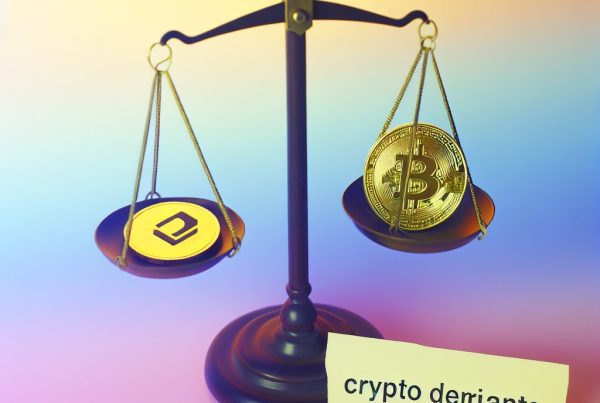How to Decode a Token Transfer
The cryptocurrency landscape is vast and complex, with token transfers being a fundamental aspect of blockchain technology. Understanding how to decode a token transfer is essential for anyone involved in the crypto space, whether you’re a trader, developer, or enthusiast. This guide will provide you with a comprehensive understanding of token transfers, how they work, and the tools you can use to decode them.
What is a Token Transfer?
A token transfer refers to the movement of tokens from one wallet to another on a blockchain. Tokens can represent various assets, including cryptocurrencies, utility tokens, and non-fungible tokens (NFTs). Each transfer is recorded on the blockchain, ensuring transparency and security.
Understanding Blockchain Transactions
To decode a token transfer, it’s crucial to understand how blockchain transactions work. Each transaction consists of several components:
- Sender Address: The wallet address from which the tokens are being sent.
- Receiver Address: The wallet address to which the tokens are being sent.
- Token Amount: The number of tokens being transferred.
- Transaction Hash: A unique identifier for the transaction.
- Timestamp: The date and time when the transaction was executed.
These components are essential for tracking and verifying transactions on the blockchain.
How Token Transfers Work
Token transfers occur through smart contracts, which are self-executing contracts with the terms of the agreement directly written into code. When a token transfer is initiated, the following steps take place:
- The sender initiates the transfer by signing the transaction with their private key.
- The transaction is broadcasted to the network, where it is verified by nodes.
- Once verified, the transaction is added to a block and subsequently added to the blockchain.
- The receiver’s wallet balance is updated to reflect the new tokens.
This process ensures that token transfers are secure, transparent, and immutable.

Decoding a Token Transfer
Decoding a token transfer involves analyzing the transaction details on the blockchain. Here’s how you can do it:
Step 1: Obtain the Transaction Hash
The first step in decoding a token transfer is to obtain the transaction hash. This unique identifier can be found in your wallet or on the platform where the transaction was initiated.
Step 2: Use a Blockchain Explorer
Once you have the transaction hash, you can use a blockchain explorer to view the transaction details. Popular blockchain explorers include:
- Etherscan for Ethereum transactions.
- BscScan for Binance Smart Chain transactions.
- Blockchair for multiple blockchains.
Simply enter the transaction hash into the search bar of the explorer to retrieve the transaction details.
Step 3: Analyze the Transaction Details
After entering the transaction hash, you will see various details, including:
- From: The sender’s wallet address.
- To: The receiver’s wallet address.
- Value: The amount of tokens transferred.
- Gas Fees: The fees paid for processing the transaction.
- Status: Whether the transaction was successful or failed.
Understanding these details will help you decode the token transfer effectively.
Common Use Cases for Token Transfers
Token transfers are utilized in various scenarios within the cryptocurrency ecosystem:
- Trading: Users transfer tokens between exchanges to take advantage of price differences.
- Staking: Tokens are transferred to staking contracts to earn rewards.
- Payments: Businesses accept tokens as payment for goods and services.
- Charity: Donations can be made using cryptocurrencies, ensuring transparency.
Real-World Examples of Token Transfers
To illustrate the importance of understanding token transfers, let’s look at a few real-world examples:
Example 1: Ethereum Token Transfer
In 2021, a user transferred 1,000 DAI (a stablecoin on the Ethereum network) to another wallet. The transaction hash was 0x1234567890abcdef…. By using Etherscan, the user could verify the transaction details, including the gas fees paid and the time of transfer. This transparency is crucial for users to ensure their transactions are processed correctly.
Example 2: Binance Smart Chain Transfer
A user on Binance Smart Chain transferred 500 BNB to a decentralized finance (DeFi) platform for yield farming. The transaction was recorded on BscScan, allowing the user to track the status and confirm that the transfer was successful. This ability to monitor transactions in real-time enhances user confidence in the platform.
Tools for Decoding Token Transfers
Several tools can assist in decoding token transfers and analyzing blockchain data:
- Blockchain Explorers: As mentioned earlier, explorers like Etherscan and BscScan provide detailed transaction information.
- Wallets: Many cryptocurrency wallets offer built-in features to track and analyze token transfers.
- Analytics Platforms: Tools like Nansen and Dune Analytics provide advanced analytics for blockchain data.
FAQs About Token Transfers
What is the difference between a token and a cryptocurrency?
A cryptocurrency is a digital currency that operates on its own blockchain (e.g., Bitcoin), while a token is built on an existing blockchain (e.g., Ethereum) and can represent various assets or utilities.
How can I track my token transfers?
You can track your token transfers using a blockchain explorer by entering your wallet address or transaction hash. This will provide you with detailed information about your transactions.
What are gas fees, and why do they matter?
Gas fees are transaction fees paid to miners for processing transactions on the blockchain. They vary based on network congestion and are essential for ensuring your transaction is prioritized and executed promptly.
Can I reverse a token transfer?
No, once a token transfer is confirmed on the blockchain, it cannot be reversed. This immutability is a key feature of blockchain technology.
Conclusion
Decoding a token transfer is a vital skill for anyone involved in the cryptocurrency industry. By understanding how token transfers work, utilizing blockchain explorers, and analyzing transaction details, you can navigate the crypto landscape with confidence. Whether you’re trading, investing, or simply exploring, being able to decode token transfers will enhance your overall experience in the crypto space.
For the latest news and updates in the cryptocurrency world, consider visiting Bitrabo. You can also follow me on social media for more insights: X, Instagram, and Threads.
Disclaimer: This article is for informational purposes only and should not be considered financial advice. Always do your own research before making investment decisions.
The Crypto Watchlist of the Week 🔎
Subscribe to receive expert-curated projects with real potential—plus trends, risks, and insights that matter. Get handpicked crypto projects, deep analysis & market updates delivered to you.


